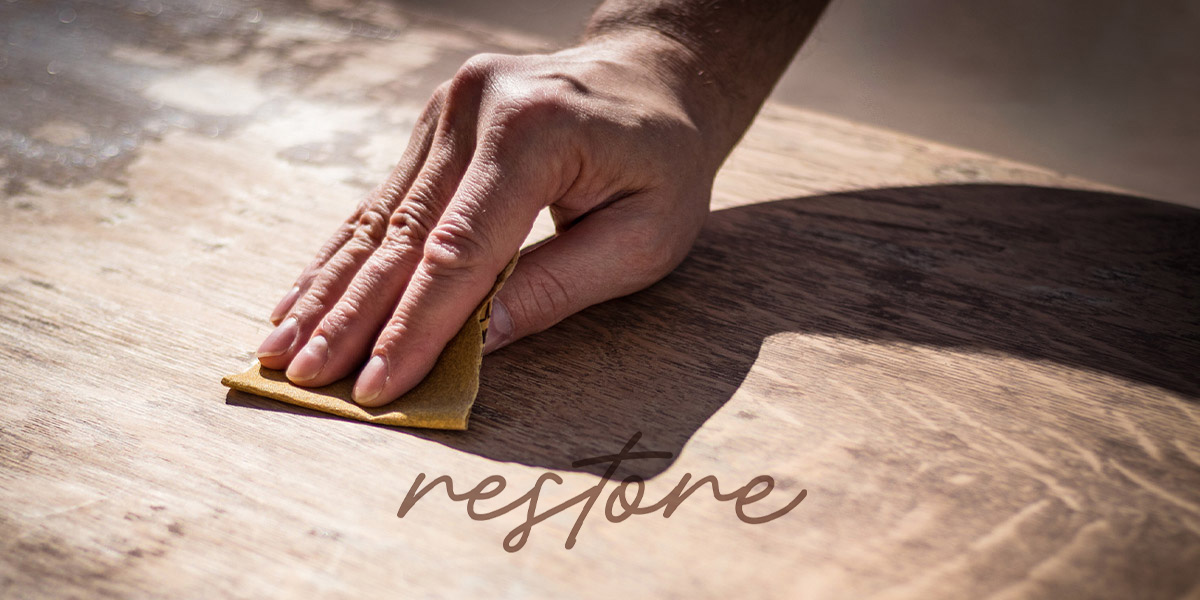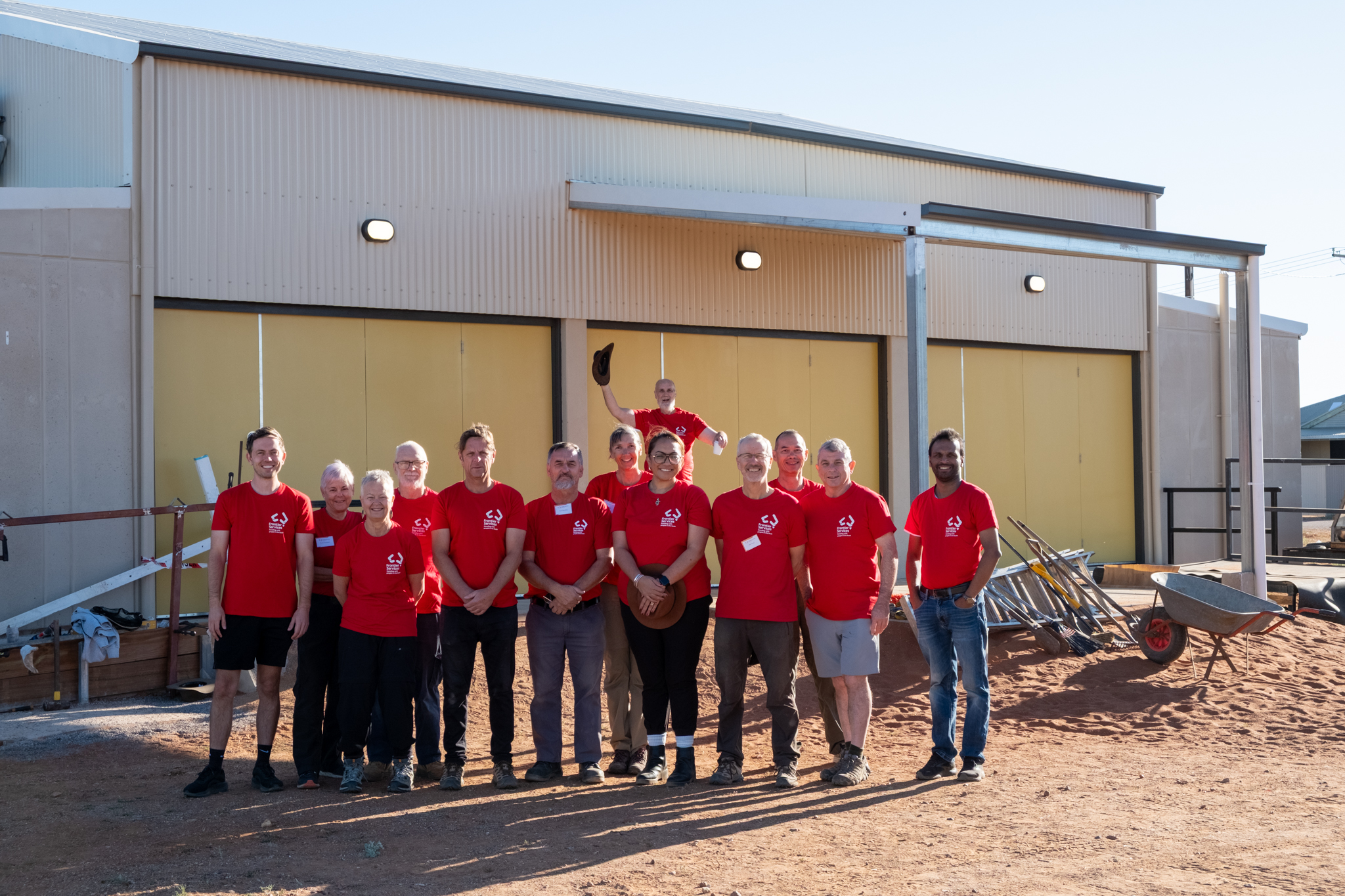Lent 2024: The Great Restoration Project
17 March 2024

Over the last ten years, there has been an explosion of television shows focussed on building and furniture restoration. Shows like The Repair Shop, Fixer Upper, The Block, Flip or Flop all focus on restoring the old and bringing life to the discarded.
For Lent 2024, we invite you to join us as we learn about the greatest restoration project of all time. Over seven weeks we’ll focus on God’s plan for humankind – a plan for restoration, a plan for new life, a plan that was both unexpected and brilliant.
There are two parts to the resource:
- Worship Resource (for worship services): (PDF attached)
- Including Lectionary Readings, Bible Themes, suggestions for Interactive Activity, Liturgy and Prayers, Tool and Restoration Facts, Restorative Practices, and Conversation Starters that can be used in worship. This resource is intentionally designed to help churches prepare worship services during the season to engage people of all ages and will be suitable for all congregations regardless of size, demographic, or location.
- Bible Reflections (for Church members and families): (PDF attached)
- Connected to the weekly worship resource with tool and restoration facts, prayer ideas, bible readings, reflection, discussion questions, restorative practice, and links to additional resources for use by individuals, groups, and families of all ages and sizes during the season.
For more information contact Jess Pinkerton and Paul Wetzig at discipleship@ucaqld.com.au.
- Toolbox and Tools images – Colour (ZIP folder) (zip folder attached)
- Toolbox and Tools images – Black and White (ZIP folder) (zip folder attached)
- Toolbox and Tools easy print with instructions – Colour and Black and White (pdf attached)
Lent 1 – 18 February: The Great Restoration Project
- Toolboxes became popular in the industrial age. In 1904, Harry Gurstner, a patternmaker, made a toolchest for his personal use. It took him a year to make. His coworkers liked it and wanted him to make more. In 1906, he started his own tool chest company in Dayton, Ohio. You can read more at https://www.ctemag.com/news/industry-news/purpose-and-history-toolbox
- Read about the meticulously designed toolbox/chest by Henry Studley. It’s not only functional, but also a work of art. How many tools can you count? https://whyevolutionistrue.com/2018/11/27/henry-studleys-beautiful-tool-chest/
- Look at these before and after pictures. What would you have discarded? What would you have restored? https://www.boredpanda.com/interesting-old-things-restoration/
Lent 2 – 25 February: What’s the plan? Setting up a Good Project Plan
- Carpenter’s Pencils are used by builders, because they are suitable for marking on rough surfaces, such as concrete or stone. Their shape and lead density aid in marking legible lines with a straight edge that are clear and easy to follow with a saw blade. https://www.desaishardware.co.za/howto_pencil.html
- The flat pencil is one of the oldest pencil types. The first versions were made by hollowing out sticks of juniper wood. https://en.wikipedia.org/wiki/Carpenter_pencil
- The oldest surviving pencil is a German carpenter’s pencil dating from the 17th Century and now in the Faber-Castell collection. https://en.wikipedia.org/wiki/Carpenter_pencil
- Read about common restoration mistakes (often because planning didn’t happen). https://touchoforanges.com/blogs/news/7-common-mistakes-in-antique-wood-restoration
- Look up restoration fails like those below. What planning needs to occur so that the restoration goes smoothly? https://www.youtube.com/watch?v=1JWXq8buGHk
Lent 3 – 3 March: A Labour of Love – No Pain, No Gain
- Sandpaper is a special thick paper with a rough, abrasive surface. Painters will often sand a wall with sandpaper before painting it. Woodworkers use sandpaper to smooth wooden surfaces, and sandpaper is also useful for removing loose paint, grit, or dirt when you’re painting or refinishing something. https://www.vocabulary.com/dictionary/sandpaper
- The first recorded instance of sandpaper was in 13th-century China when crushed shells, seeds, and sand were bonded to parchment using natural gum. Shark skin (placoid scales) has also been used as an abrasive, and the rough scales of the Coelacanth are used for the same purpose by the natives of https://en.wikipedia.org/wiki/Sandpaper
- Sandpaper isn’t made of ordinary sand – it’s made of abrasive minerals like aluminium oxide or garnet that are glued onto a paper backing. https://indianapublicmedia.org/amomentofscience/the-secrets-of-sandpaper.php
- Often it takes a long time, and a lot of ‘blood, sweat and tears’, to restore furniture and houses. (see Grand Designs https://www.youtube.com/watch?v=7iqQYZwL-Qo)
Lent 4 – 10 March: Flip or Flop?!
- A spirit level, bubble level, or simply a level, is an instrument designed to indicate whether a surface is horizontal (level) or vertical (plumb). https://en.wikipedia.org/wiki/Tape_measure
- The spirit level, as we know it today, is said to have been invented in the mid-1600s by the wealthy Frenchman Melchisedech Thevenot, who had studied science during his life; however, they did not become popular until the 1700s. Read more at https://tenrandomfacts.com/spirit-level/
- No one knows how old spirit levels really are. However, it is known that the Romans used water filled tanks as primitive spirit levels when building their famous aqueducts. https://www.hultafors.com/articles/the-history-of-spirit-levels
- One of the first documented tape measures arrived on the scene in 1829 and was patented by James Chesterman. This first tape measure was made of steel from the left-over wire that was used for hoop skirts. https://hausoftools.com/blogs/news/the-history-and-origin-of-the-tape-measure
- Did you know that on nearly every measuring tape, you’ll find a small slot on the end hook. It’s there to grab onto the end of a nail or screw. https://www.ustape.com/hidden-features-of-measuring-tape/
Lent 5 – 17 March: Master and Apprentice
- A drill is a power tool that’s used for making narrow holes or sometimes for pushing screws into wood or other hard material. https://www.vocabulary.com/dictionary/drill
- The first drill with an electric motor was invented by two Australians, Arthur James Arnot and William Blanch Brain, in 1889. https://kids.kiddle.co/Drill You can look at their drill patent here: https://www.protoolreviews.com/what-is-a-drill/
- One of the first (if not the first) drill to be invented was the bore drill. This device was invented in Egypt sometime around the year 3000 B.C. The next drill to be invented was the auger drill. This drill can still be found in use today and was invented in the Roman ages. https://ronixtools.com/en/blog/history-of-electric-drills/
- Different people offer different skills and there’s always something new to learn. Check out The Repair Shop video https://www.youtube.com/watch?v=r0tpFmcChPs What experts do you see?
- It’s important that we train up the next generation of restorers https://www.cbsnews.com/video/program-at-st-peters-basilica-teaches-new-generation-how-to-restore-ancient-treasures/
Lent 6 – Palm Sunday – 24 March: An Unexpected Treasure
- Ancient Egyptians used reeds with crushed ends, their own hieroglyphics depict people painting quite frequently.
- By the 15th century, quills were the favoured style of brush using soft hairs or bristles.
- Fun fact: the end of a brush is called the bristle. This is because they used to be made exclusively from the bristle of hogs, pigs, and boars, all noted for their particularly rough hair. https://primetimepaint.ca/blogs/news/a-brief-history-of-the-paintbrush#.
- Old painting kits, estimated to be around 100,000 years old, were discovered in a cave in modern South Africa.
- Paintbrushes are usually made by clamping bristles to a handle with a ferrule and are available in various sizes, shapes, and materials. https://en.wikipedia.org/wiki/Paintbrush
Good Friday - 29 March: Please Help!
- Hammers are tools used primarily to imply a sharp force on to an object, often to force an item into another. They are often used to secure nails, shape metal or apply components, as well as crush and destroy objects.
- Hammers have been used since the Stone Age. The first hammers were made without handles. Stones attached to sticks with strips of leather or animal sinew were being used. The hammer was used for building, food, and protection. https://wiki.kidzsearch.com/wiki/Hammer
- There are over 40 types of hammers. https://en.wikipedia.org/wiki/Hammer
- Rags were likely the first cleaning cloth, made from scraps or old pieces of clothing or other cloth, likely cotton or linen.https://aawiping.com/blogs/news/the-history-of-a-rag-where-do-they-come-from
- Today, microfibre is widely used, due to it’s high absorbency, dirt trapping efficiency, electrostatic charge, durability, reduced cleaning time, effort, and water use. https://www.microfiberwholesale.com/blogs/blog/secret-science-behind-microfiber?igTg=9c995629-2bdb-4705-b293-ac4bcd4bc101
- After the industrial revolution, traveling rag merchants would collect used clothing and textiles to return to factories, a great example of early recycling efforts. https://brotex.com/history-of-wiping/
- Read Old Turtle and the Broken Truth, Douglas Wood https://www.youtube.com/watch?v=26byBtwjpy4&t=9s
Discipleship
Discipleship & Mission
Children, Youth, Young Adults and Families
Journey
Latest stories
Browse the latest stories of the Church


